In our own backyard, the Western Parkland City Authority is tasked with creating Sydney’s third city, the parklands city. We speak with its CEO, Sarah Hill, about what it takes to shape a city.

March 8th, 2023
City-shaping projects are a cornerstone of architectural design, but shaping a city is an entirely different ball game.
In our own backyard, the Western Parkland City Authority (WPCA) is tasked with creating Sydney’s third city, the parklands city. Bradfield and the entirety of the parklands city will be a hub for manufacturing and innovation, throwing away conceived notions on how cities are typically created to redefine urban design.
The plan devised by the WPCA will see the industry components of the city created first, with the housing infrastructure implemented second. The first building, designed by Hassell, is a sustainable, futuristic manufacturing hub that serves as a flagship of Bradfield’s values.
WPCA CEO, Sarah Hill, heads up a government body entrusted with a task seldom undertaken. She sees that task as the opportunity of a lifetime.

“There’s no cooler opportunity than building the city of the future, and we often talk about it being a 22nd century city,” she says. “It’s an incredible honour that we have to build a city not just for this generation, but the next.”
Hill has worked in London and Sydney, tasked with improving the overall beauty and functionality of cities in her time before joining the WPCA.
The ‘Parklands City’ forms 65 per cent of the land comprised within Greater Sydney. Hill works with all levels of government on a daily basis, with the vision for the project funded by the Western Sydney City Deal.
Hill says the desire for industry first, housing second has been created off the back of extensive study. “I’ve undertaken decades of research on this, and it’s a really important part of how people live, is that they don’t have to travel long distances to work.

“As a consequence, we really wanted to flip the old model of building houses first and then follow that up with jobs and retail. We want to create jobs and have a really strong focus in the Parkland City of creating jobs closer to where people are already living, but also getting ahead of the curve and creating more jobs and better jobs for when new residents come to live in the Parkland City.”
An array of public open spaces, walkways and planting of trees form the pillars of the urban design plan for the Parklands City. Thirty-seven hectares of the Bradfield CBD will be dedicated to public space, currently being worked on under the title of Central Park. Hill says creating a resilient, future-forward city is key to it living up to its 22nd century billing.
“We are trying to build a city that evolves over time, not only in terms of scale, but also technology and evolution,” she says. “What is the cutting edge technology and how can we design the city for that? How can we put in place simple concepts around multi-utility tunnels that allow us to augment services and utilities?”

“But also really important to us is starting with where we want to be. So our first building is a really good example of this. We’re very proud of our first building, a multipurpose building that invites the community into it. And that will allow our young community members, our young students to stand on the rooftop on the viewing platform and watch, uh, the city of the future being built in real time,” says Hill.
The Hassell-designed building features a green roof, low carbon materials and rammed earth walls. Powered by renewable energy and recycled water, it can be operated completely off grid. Connection to Country is also a major cornerstone of the design. Hill says there will be no guide or typology that restricts architects to certain configurations or textures.
“From an urban typology point of view, we’re working through (a manifesto), but we also don’t want to restrict architects and designers. In my experience, cities evolve over time and great architecture will follow.
“We’re really keen to work with fantastic Australian and international architectural firms, but also want to support local talent and Indigenous firms as well, to get a real understanding and appreciation of culture in the city centre, because nowhere else in the world can mirror or mimic the incredible culture that we have in Western Sydney.”
Western Parkland City Authority
wpca.sydney
INDESIGN is on instagram
Follow @indesignlive
A searchable and comprehensive guide for specifying leading products and their suppliers
Keep up to date with the latest and greatest from our industry BFF's!

Merging two hotel identities in one landmark development, Hotel Indigo and Holiday Inn Little Collins capture the spirit of Melbourne through Buchan’s narrative-driven design – elevated by GROHE’s signature craftsmanship.
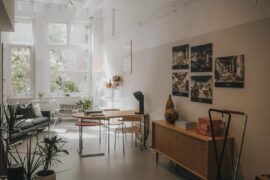
Sydney’s newest design concept store, HOW WE LIVE, explores the overlap between home and workplace – with a Surry Hills pop-up from Friday 28th November.

For those who appreciate form as much as function, Gaggenau’s latest induction innovation delivers sculpted precision and effortless flexibility, disappearing seamlessly into the surface when not in use.

London-based design duo Raw Edges have joined forces with Established & Sons and Tongue & Groove to introduce Wall to Wall – a hand-stained, “living collection” that transforms parquet flooring into a canvas of colour, pattern, and possibility.
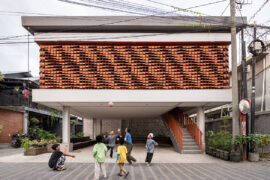
SHAU’s Kampung Mrican revitalisation transforms community life through social architecture, local collaboration and sustainable design.
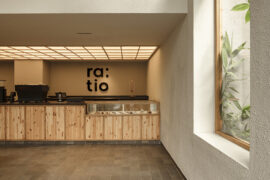
Ra:tio café blends calm interiors and lush outdoor spaces through VAL Atelier and The Pinewood Studio’s refined, contemporary design.
The internet never sleeps! Here's the stuff you might have missed
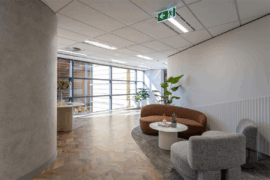
A thoughtful, low-waste redesign by PMG Group in collaboration with Goodman has transformed a dated office into a calm, contemporary workspace featuring a coastal-inspired palette and Milliken flooring for a refined finish.
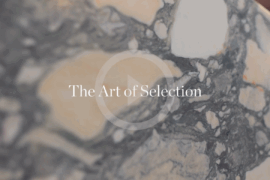
CDK Stone’s Natasha Stengos takes us through its Alexandria Selection Centre, where stone choice becomes a sensory experience – from curated spaces, crafted details and a colour-organised selection floor.